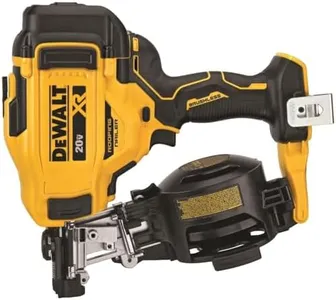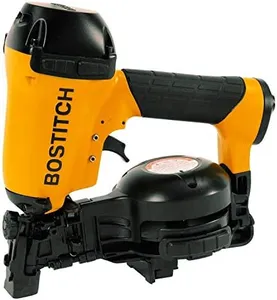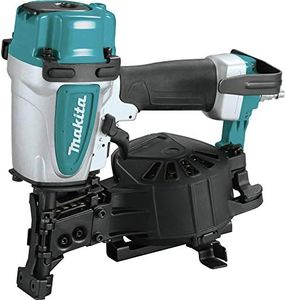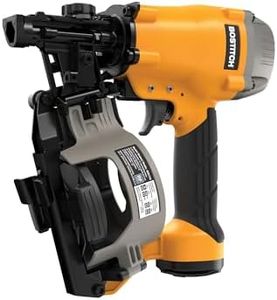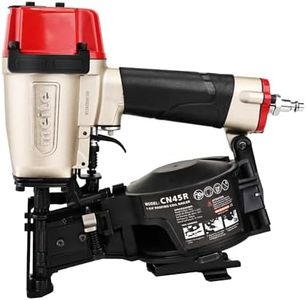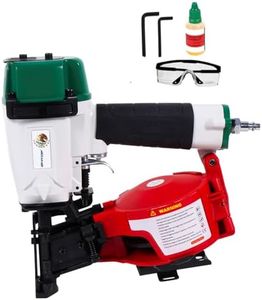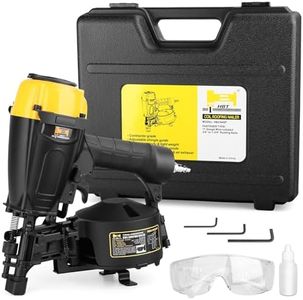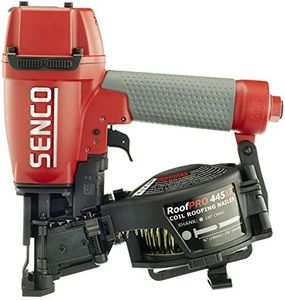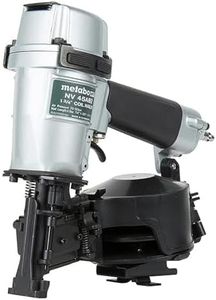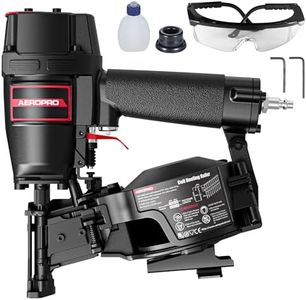We Use CookiesWe use cookies to enhance the security, performance,
functionality and for analytical and promotional activities. By continuing to browse this site you
are agreeing to our privacy policy
10 Best Roofing Nailers
From leading brands and best sellers available on the web.By clicking on a link to a third party's website, log data is shared with that third party.
Buying Guide for the Best Roofing Nailers
Choosing the right roofing nailer is essential for both DIY enthusiasts and professional roofers. The right tool significantly improves your work speed, helps you achieve a consistent finish, and reduces fatigue. It’s important to look at how you plan to use the nailer—whether for occasional repairs, regular projects, or daily commercial roofing jobs. Understanding key specifications before buying will make sure you get a model that feels comfortable, works safely, and fits the type of roofing materials you use.Nail CapacityNail capacity refers to how many nails the nailer holds in its magazine before needing a reload. Higher capacity means you can work longer without stopping to reload, which is handy for larger roofs. Nail capacity typically ranges from around 60 to over 120 nails. For occasional repairs, smaller capacity can be fine and keeps the tool lighter. For larger or frequent jobs, a larger magazine reduces downtime.
Nail Size CompatibilityThis spec describes which lengths and gauges of nails the tooling can fire. Roofing nailers usually accept nails between 7/8" and 1-3/4" in length. Make sure your nailer matches the roofing materials you use; thicker shingles or different sheathing might require longer or specific sizes. For most residential roofing, standard sizes are sufficient, but double-check to align with your shingling requirements.
WeightThe weight of the nailer influences how easy it is to handle, especially when working on a roof for long periods. Lighter tools (around 4-5 pounds) are easier to maneuver and cause less fatigue, which is helpful for big jobs or overhead tasks. Heavier models may offer extra durability but can be tiring and are better for short jobs or occasional users.
Power SourceMost roofing nailers are pneumatic, needing an air compressor, but some cordless models use batteries or fuel cells. Pneumatic tools tend to be lighter and consistently powerful, ideal for regular or professional use with access to a compressor. Cordless models are more portable for repairs and tough-to-reach areas, ideal if you don’t want to manage hoses. Choose the type based on your workflow and site conditions.
Adjustable Depth ControlThis feature lets you set how deep the nail goes into the material. Accurate depth control is key because it prevents under- or over-driving nails, which can compromise shingle hold or damage materials. Roofing jobs with different shingle types or thicknesses benefit from adjustable depth, giving you flexibility and better results.
Jam Clearing MechanismNailers sometimes jam, and a tool with an easy jam-clearing mechanism can save frustration and downtime. Look for roofing nailers that allow tool-free jam clearing, especially if you plan to work on larger projects. This keeps your workflow smooth and prevents delays.
Ergonomics and GripGood ergonomics means the nailer feels balanced and comfortable in your hand, which reduces strain. Non-slip or rubberized grips offer better control, especially if the weather turns wet. If you’ll be using the tool for extended periods or in tough conditions, prioritize comfort and grip design.

